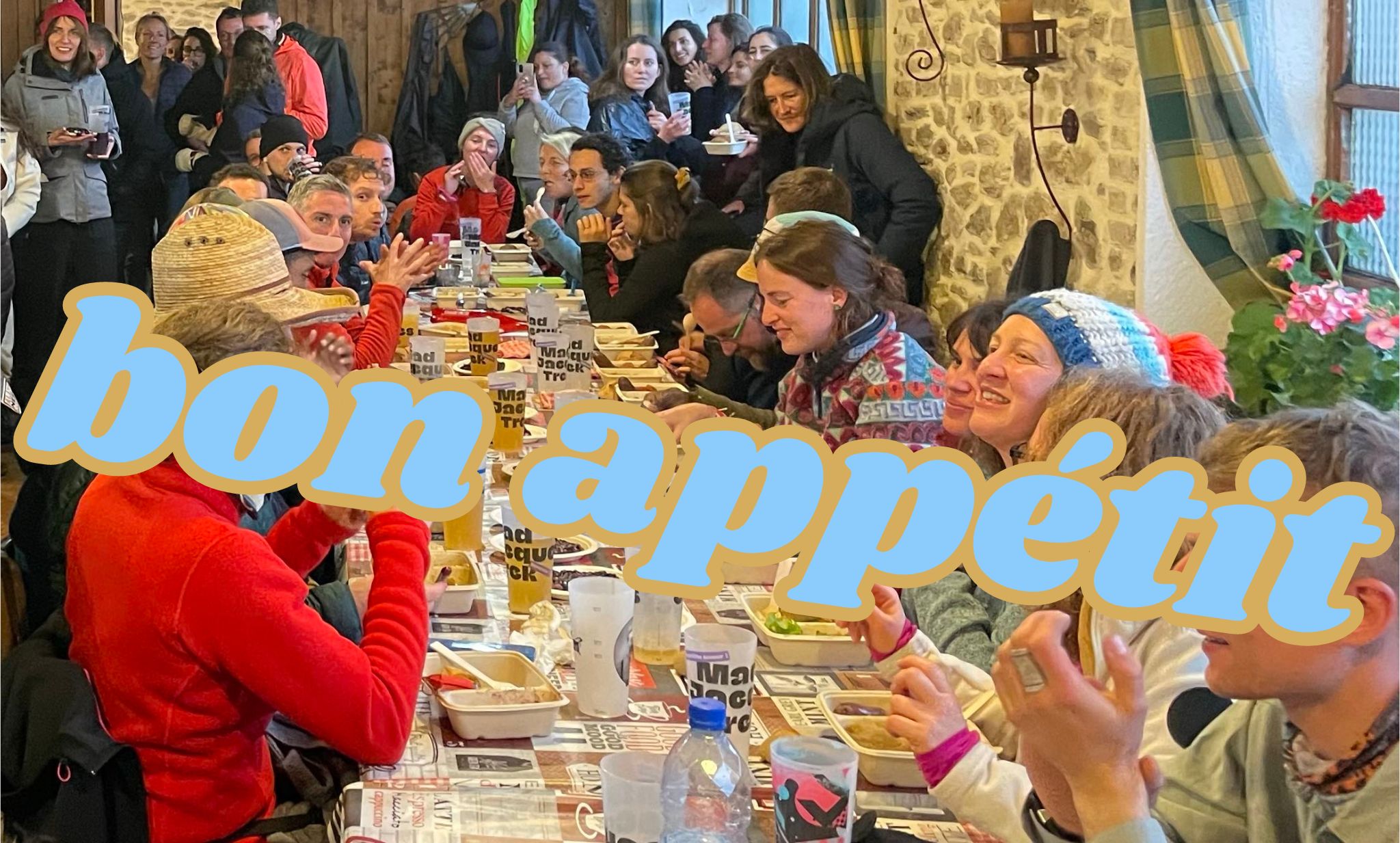When dining in France or in the company of French speakers, you’ve likely encountered the phrase Bon appétit! This expression, resonant with warmth and sophistication, is a staple of French dining culture.
But what does bon appétit signify beyond its literal translation? Is it simply a chic way to say enjoy your meal in English, or does it carry deeper cultural nuances? And when is it appropriate to use this expression?
Let’s embark on a culinary voyage to discover the essence of bon appétit in French culture, delving into its literal and contextual meanings, along with the etiquette surrounding this elegant phrase.
Whether you’re living in France or you just have an interest in the culture, understanding bon appétit in French will enrich your dining experiences and social interactions!
This article is brought to you by LingoCulture, Where you can get unlimited private French classes via Zoom with native teachers for a flat monthly rate. It’s the closest thing to immersion you can get without living in a French-speaking country. Click here to learn more.
Bon Appétit meaning in English
What does bon appétit mean, precisely?
Bon appétit is a French expression that we can translate as enjoy your meal in English. However, this phrase encapsulates much more than this simple translation suggests.
Breaking it down, bon means good, and appétit refers to appetite. Together, the phrase extends a wish for not only a pleasurable but also a satisfying meal. It’s akin to saying, “May this meal bring you delight and satisfaction.”
The French bon appétit holds such an iconic status in popular culture that it’s often used by both English and Spanish speakers! If you’re drawing parallels with Spanish, bon appétit is similar to buen provecho, with many of the same cultural trappings. Enjoy your meal in English, on the other hand, just doesn’t carry the same weight on its own.
When to use Bon Appétit
Understanding when to use bon appétit is key to appreciating its role in French dining etiquette. The short answer is that it’s used as a gracious prelude to a meal, serving as a social cue to commence dining.
In gatherings of friends or family, it’s common for everyone to exclaim bon appétit before starting the meal. In this context, proclaiming bon appétit before beginning to eat is a gesture of respect between everyone who’s sharing the meal. Similarly, when you’re a guest at someone’s home, the host might initiate the meal with a warm bon appétit!, symbolizing hospitality and care for their guests.
In French restaurants, it’s almost obligatory that serving staff wish their clients bon appétit as their meal is placed on the table. Likewise, it’s a frequent statement at fast food counters as the staff hands you your tray. It’s not even so uncommon for fellow diners to wish you bon appétit if their gazes happen to cross yours as you’re eating.
This urge among the French is so ingrained, that you’re even likely to be wished bon appétit by multiple passersby if you’re sitting in the park having a picnic. Feeling compelled to wish bon appétit to anyone we see eating is indeed a fairly accurate cliché of the French!
Overall, this small gesture can add a touch of friendliness to any meal. It’s always appropriate, regardless of whether you’re dining at home or at a restaurant, with close acquaintances or complete strangers.
Variations of Bon Appétit in French
Bon appétit definitely reigns supreme in the realm of mealtime expressions in French culture, but there are a couple of other phrases that echo similar sentiments.
Bonne dégustation: This phrase, translating essentially as enjoy your tasting, is ideal for situations where the meal is more about savoring flavors, such as at a wine tasting or a gourmet dining experience.
Régalez-vous: Translating to enjoy yourselves, this expression is more informal. It’s more of an invitation to dig in, inviting guests to relish the meal heartily.
Responding to Bon Appétit
What’s the best way to respond to bon appétit? In French dining etiquette, acknowledging this phrase is as important as using it. The right reply depends on whether the other person is eating too, or if they’re partaking in the same meal with you.
Bon appétit!: When several people are around the table about to start eating, it’s suitable for everyone else to exclaim bon appétit as a response, once the first person initiates it with a first bon appétit. This may also be a good moment to raise your glasses for a round of cheers in French!
Merci, à vous aussi: This response, translating to thank you, you too, is a polite and reciprocal way to acknowledge when someone tells you bon appétit, assuming that they’re also having a meal. It shows appreciation for the sentiment and extends the same to the person who expressed it. This is the perfect response when another diner at a restaurant wishes you bon appétit.
Merci: If the person wishing you bon appétit is not partaking in a meal, such as a waiter in a restaurant or a simple passerby, a simple merci suffices as a polite acknowledgment. In any case, merci is always the easiest way to say thank you in French, so you really can’t go wrong with this response.
Conclusion: Bon Appétit in French Culture
In today’s post we’ve seen that bon appétit is more than just a simple phrase for enjoy your meal in French. Indeed, this fundamental expression is a cornerstone of French social etiquette, encapsulating a spirit of generosity and pleasure in dining.
With the knowledge of its meaning, usage, variations, and responses, you’re ready to fully embrace and share this charming aspect of French culture.
So the next time you find yourself at a French table, whether in Paris, in Provence, or with French-speaking friends in Portland, remember to offer a heartfelt bon appétit and enjoy the cultural depth it adds to your dining experience!
